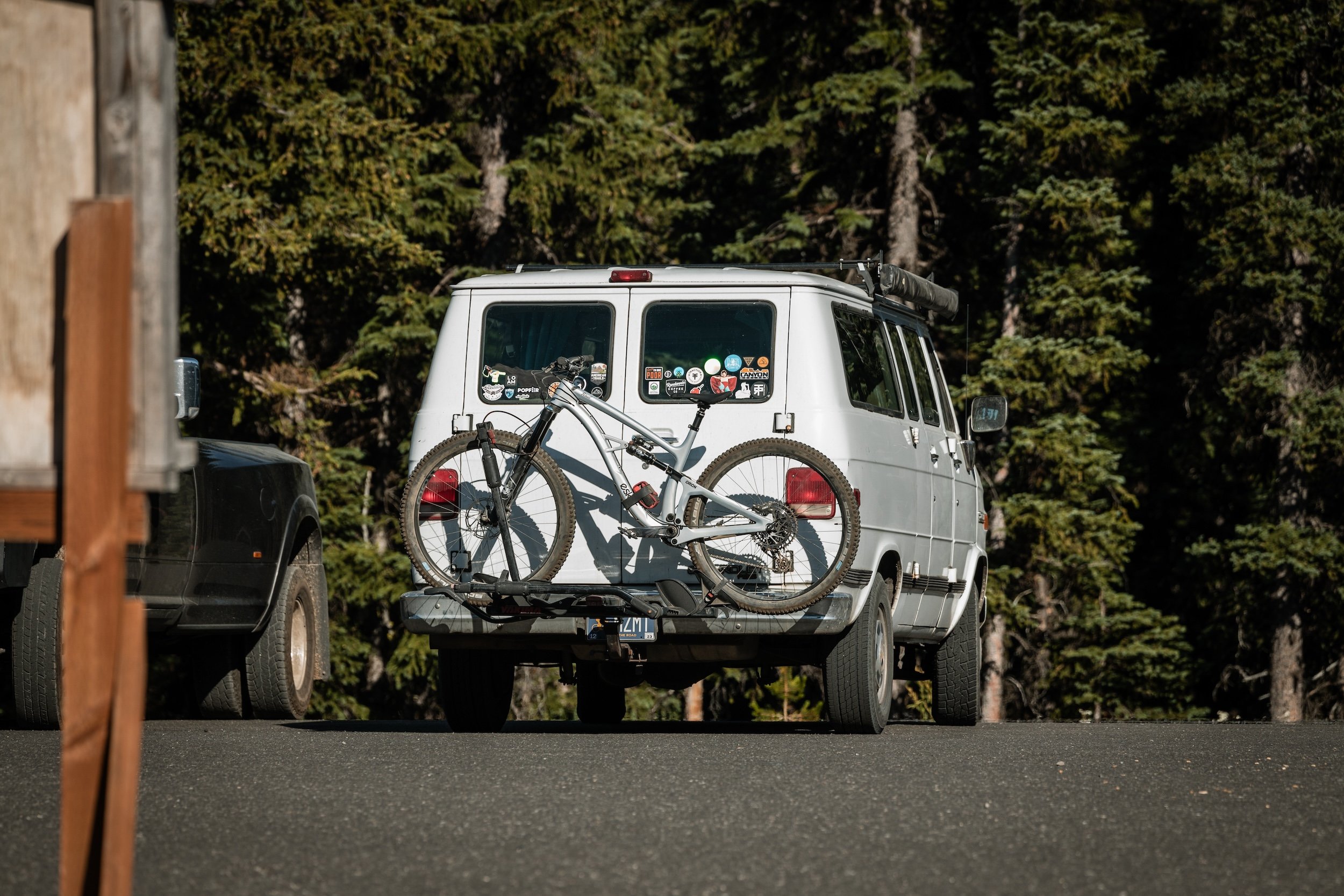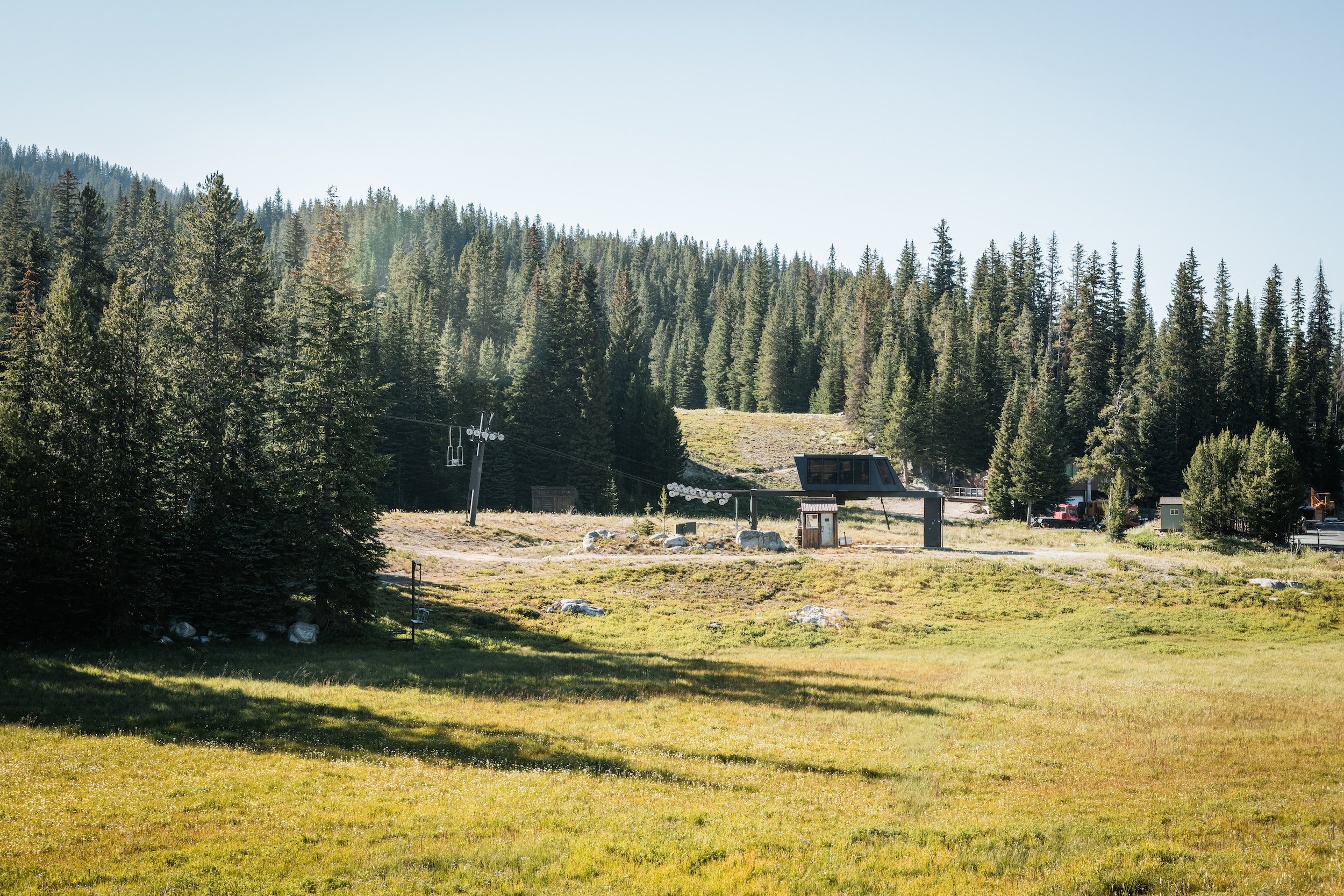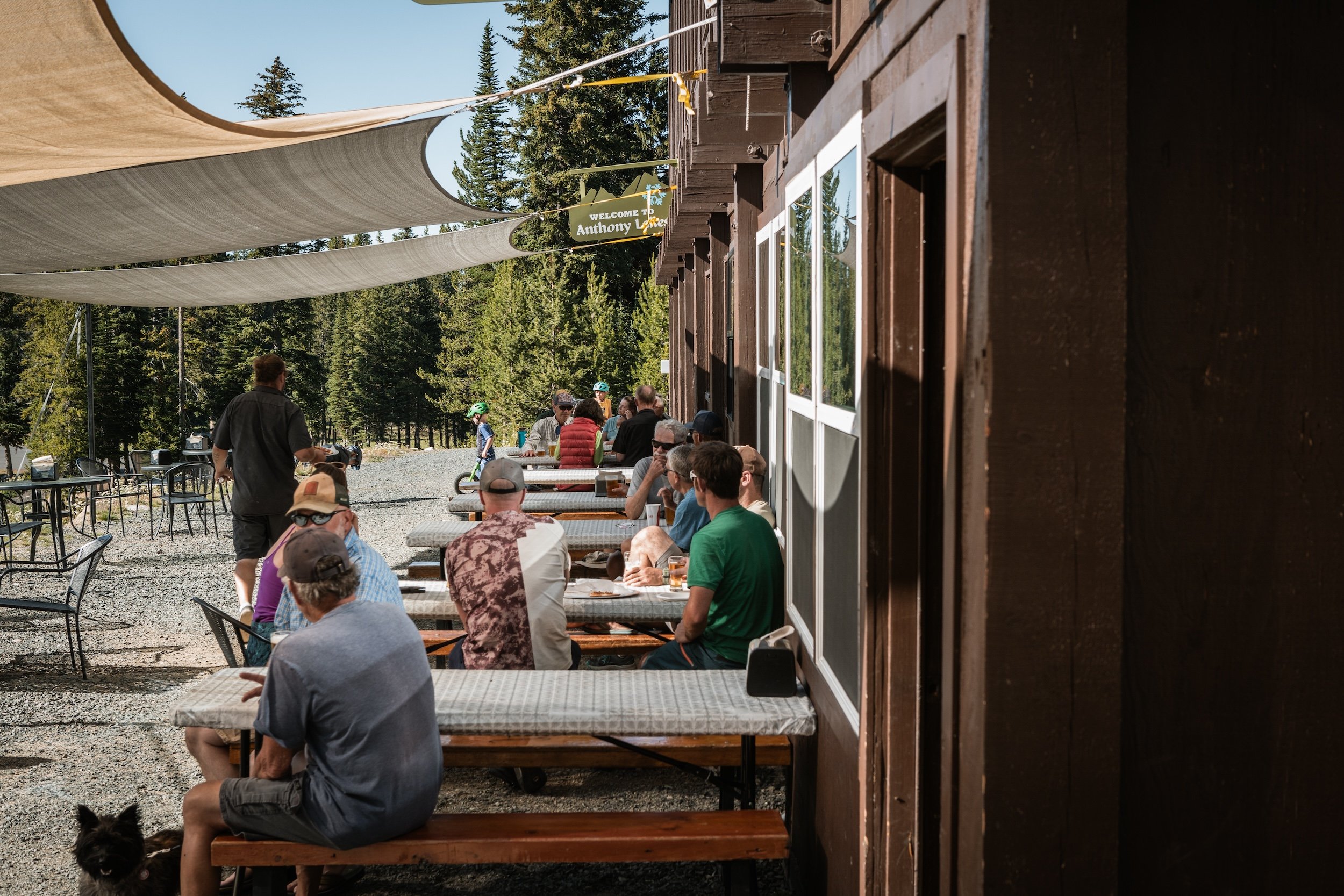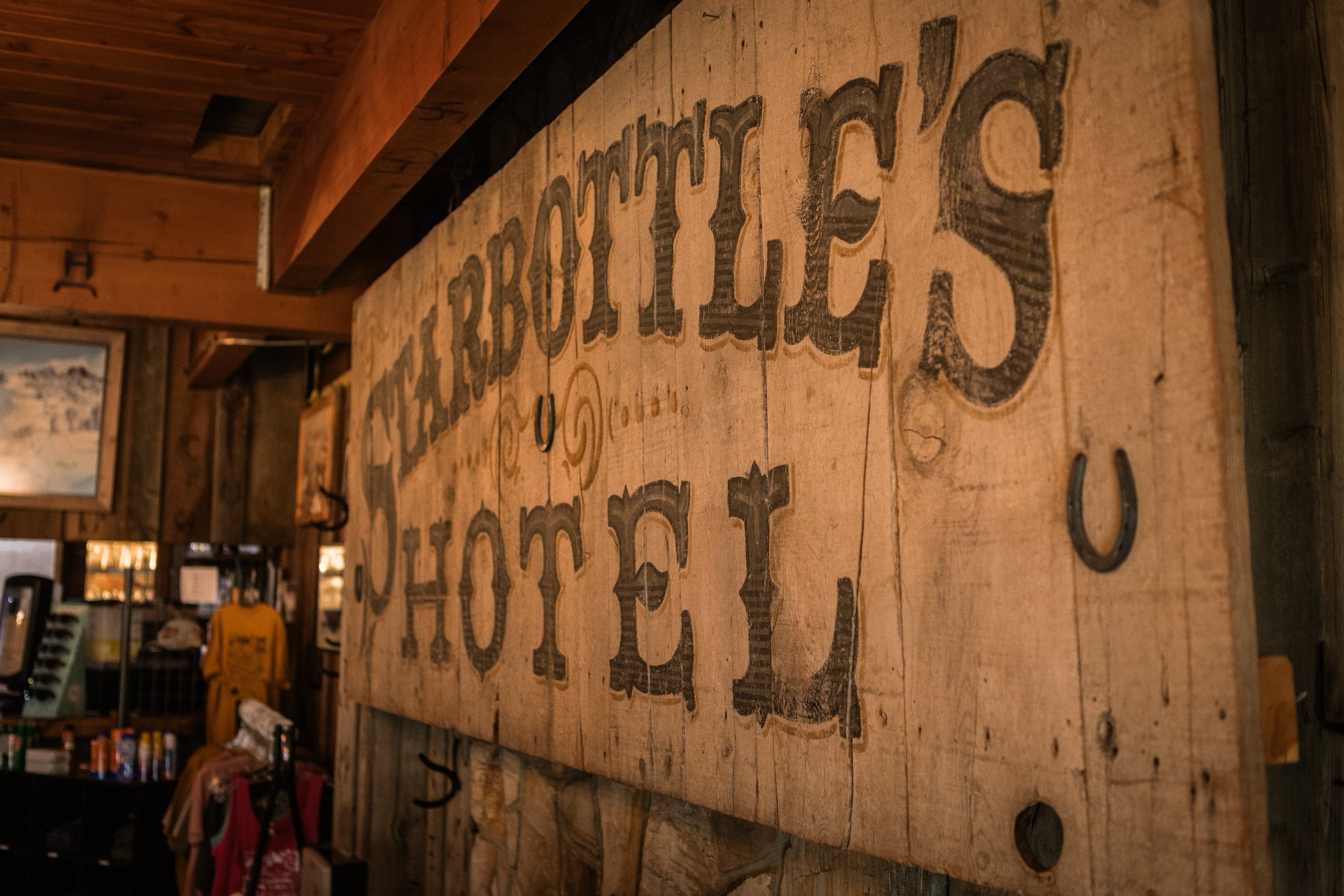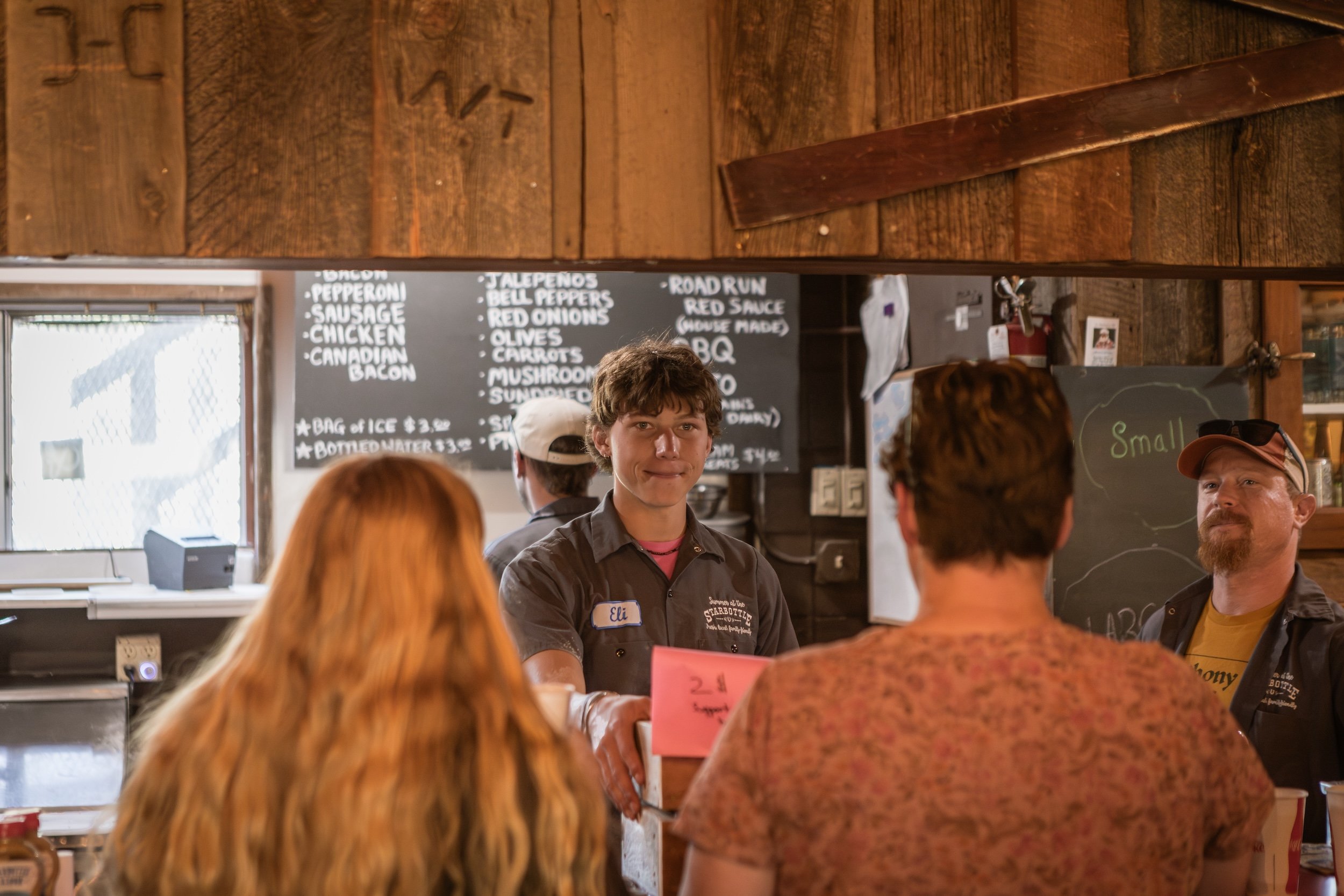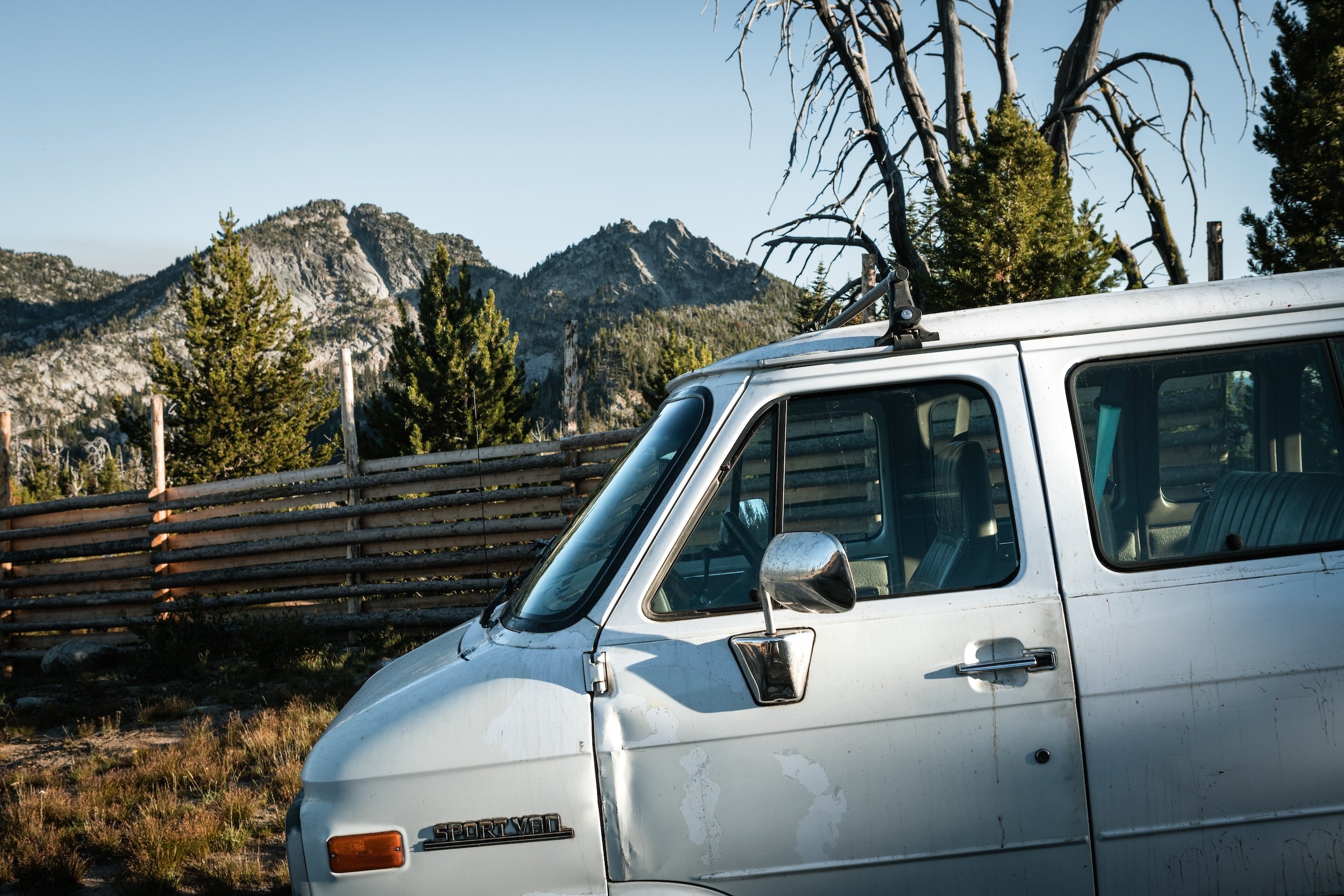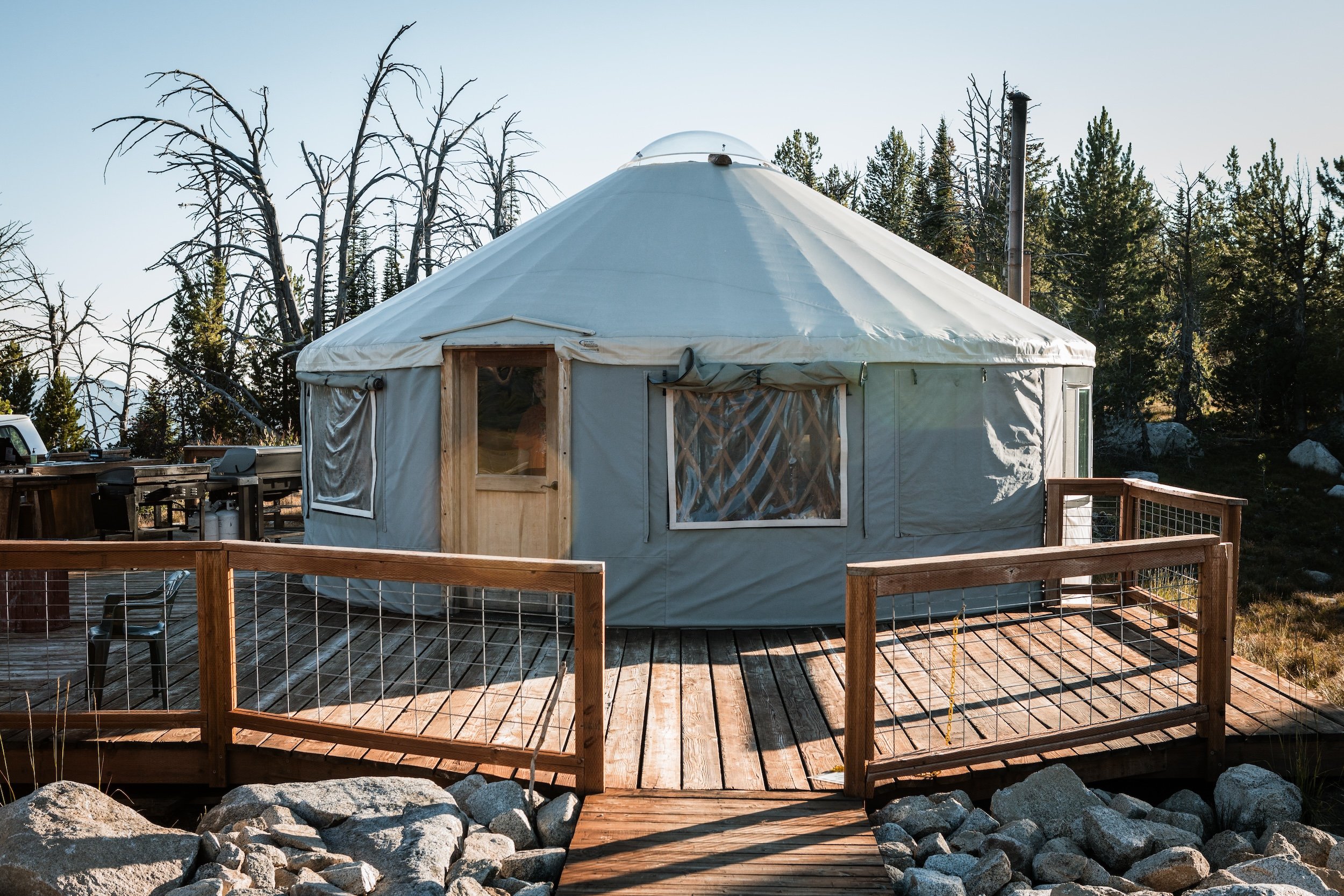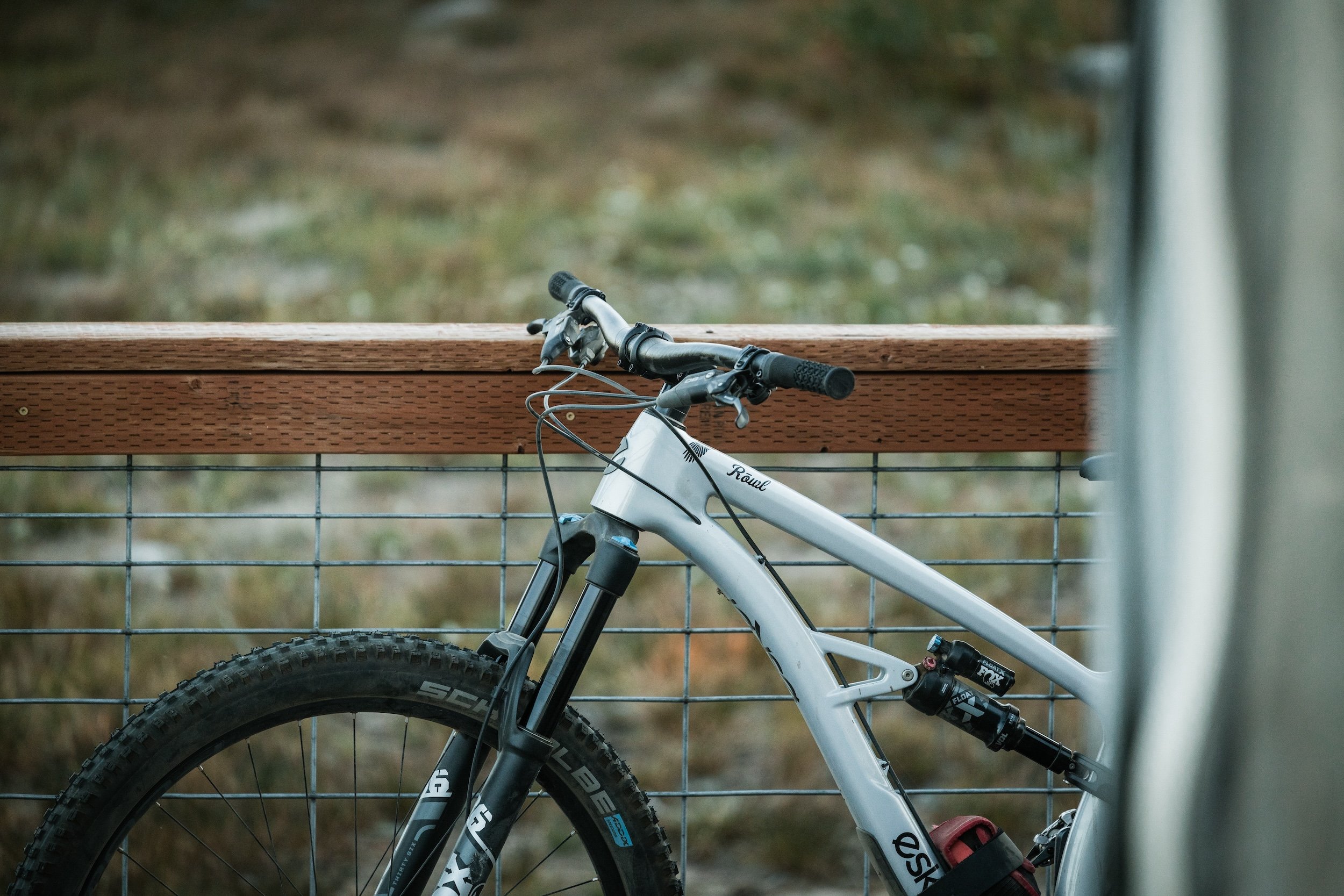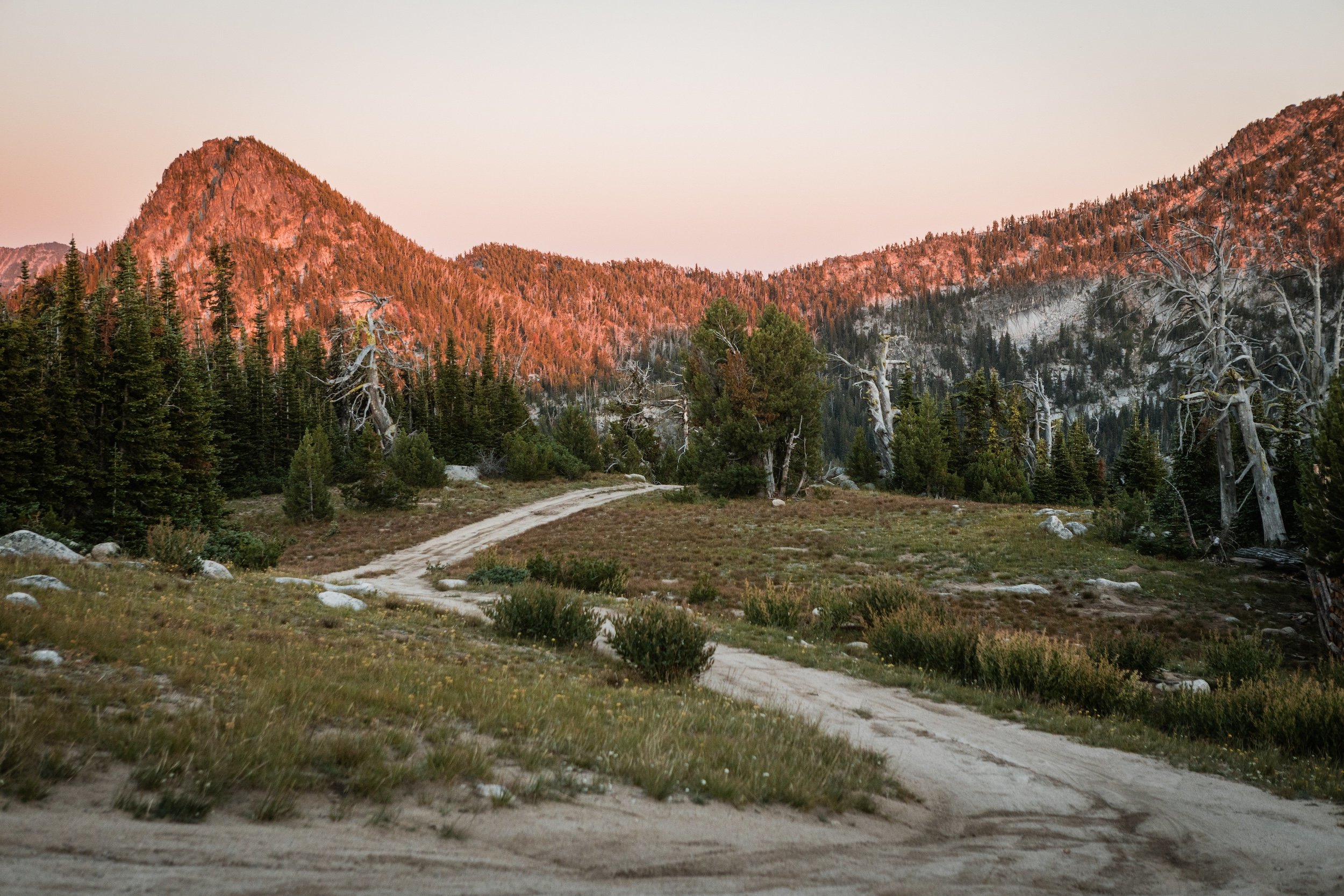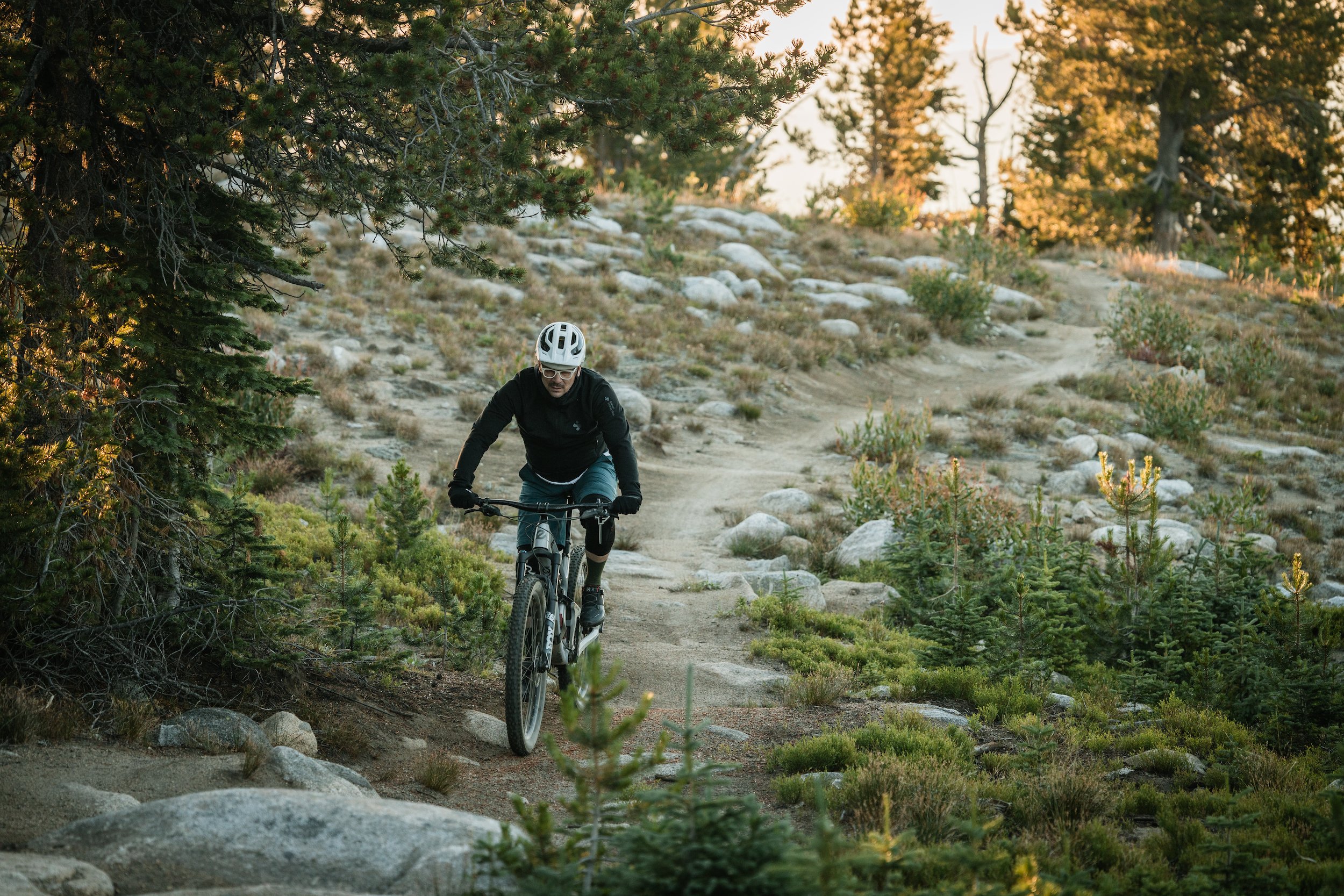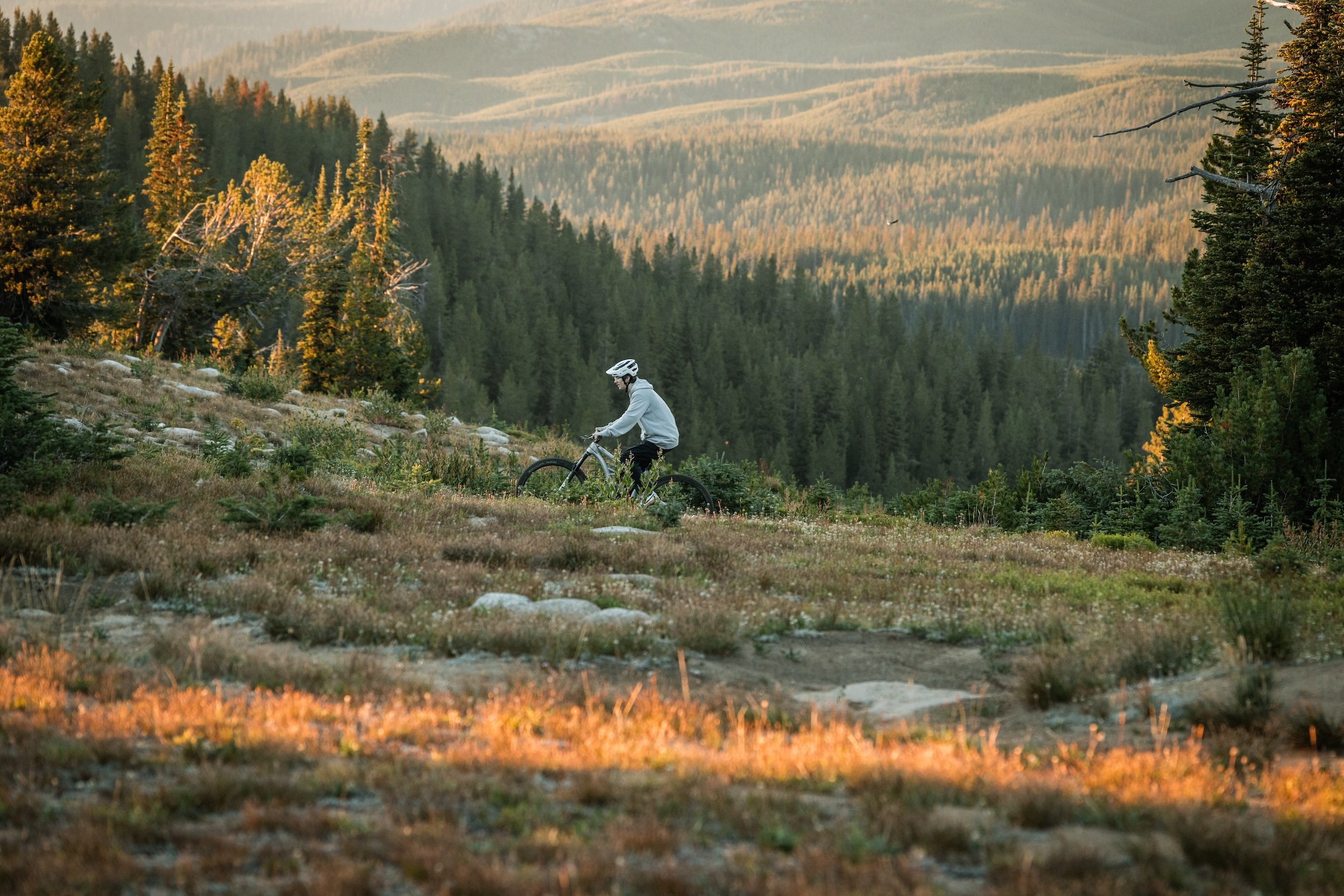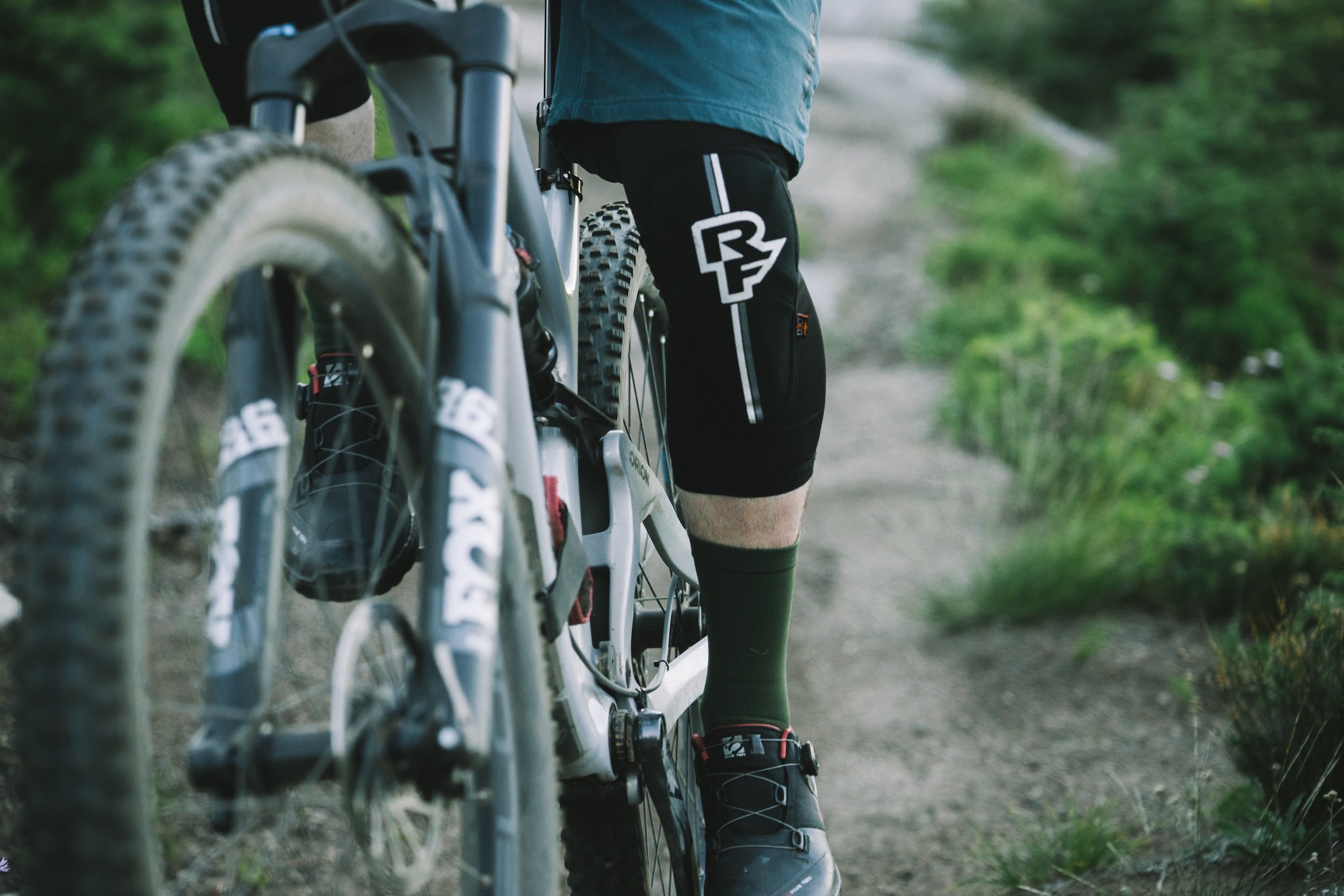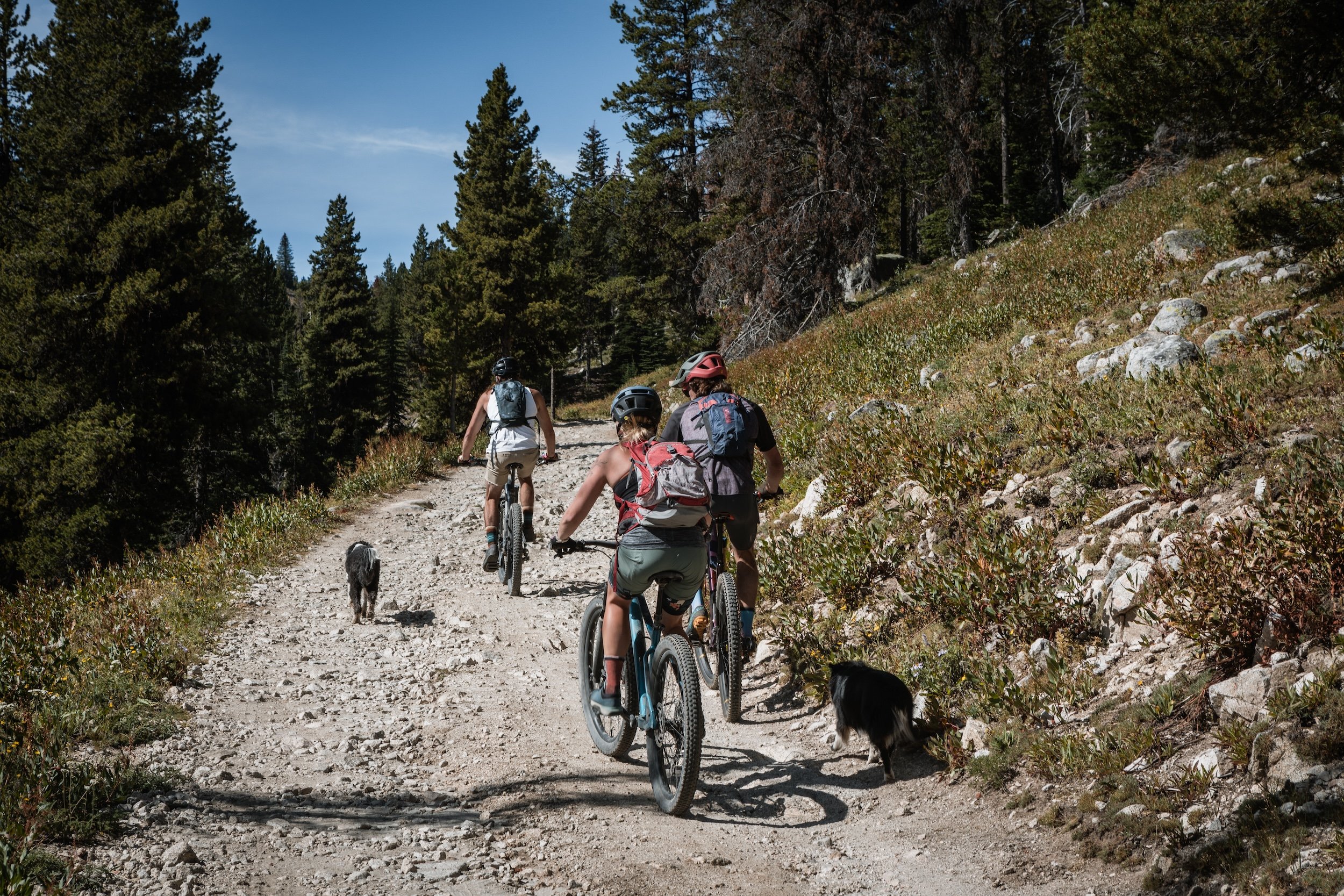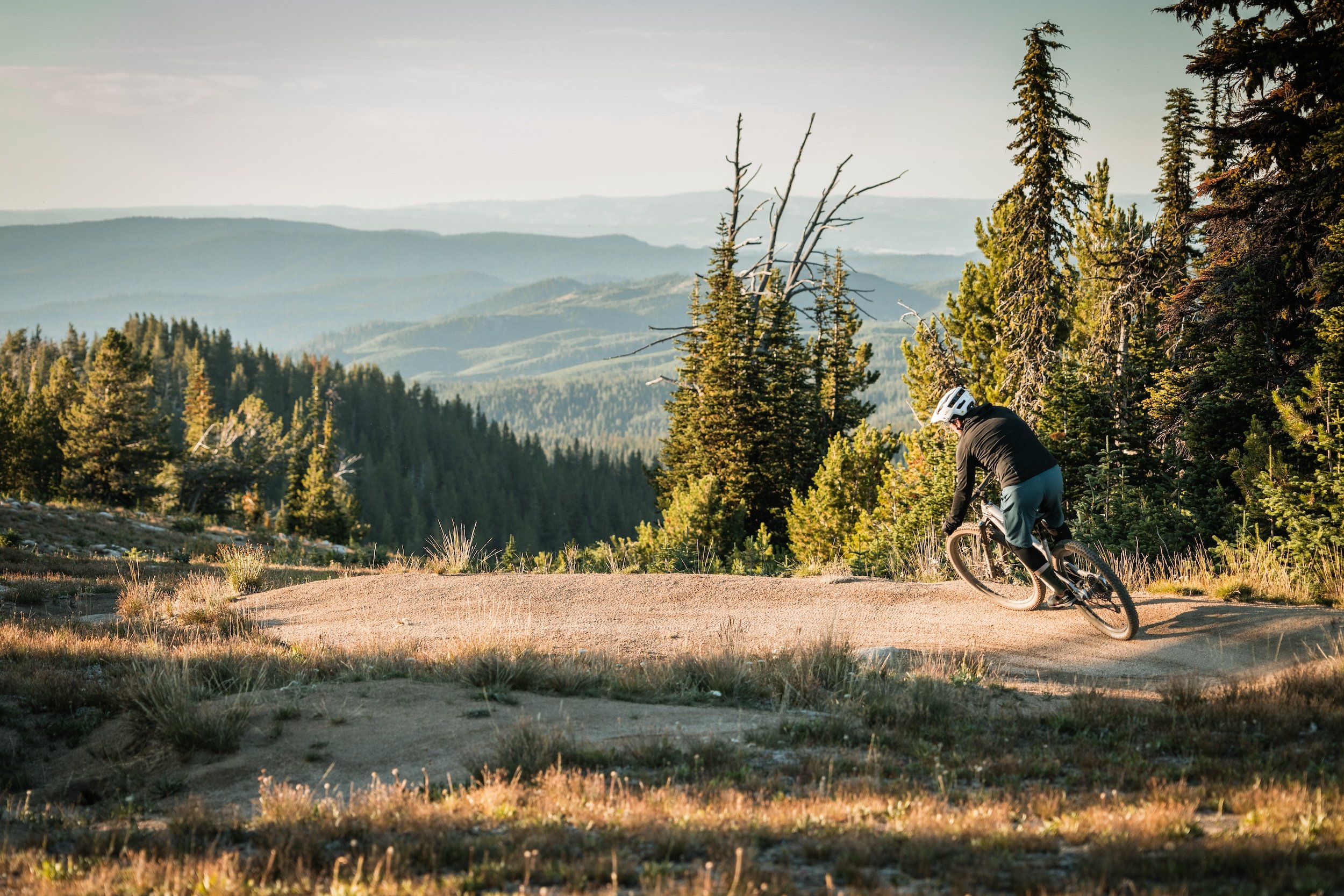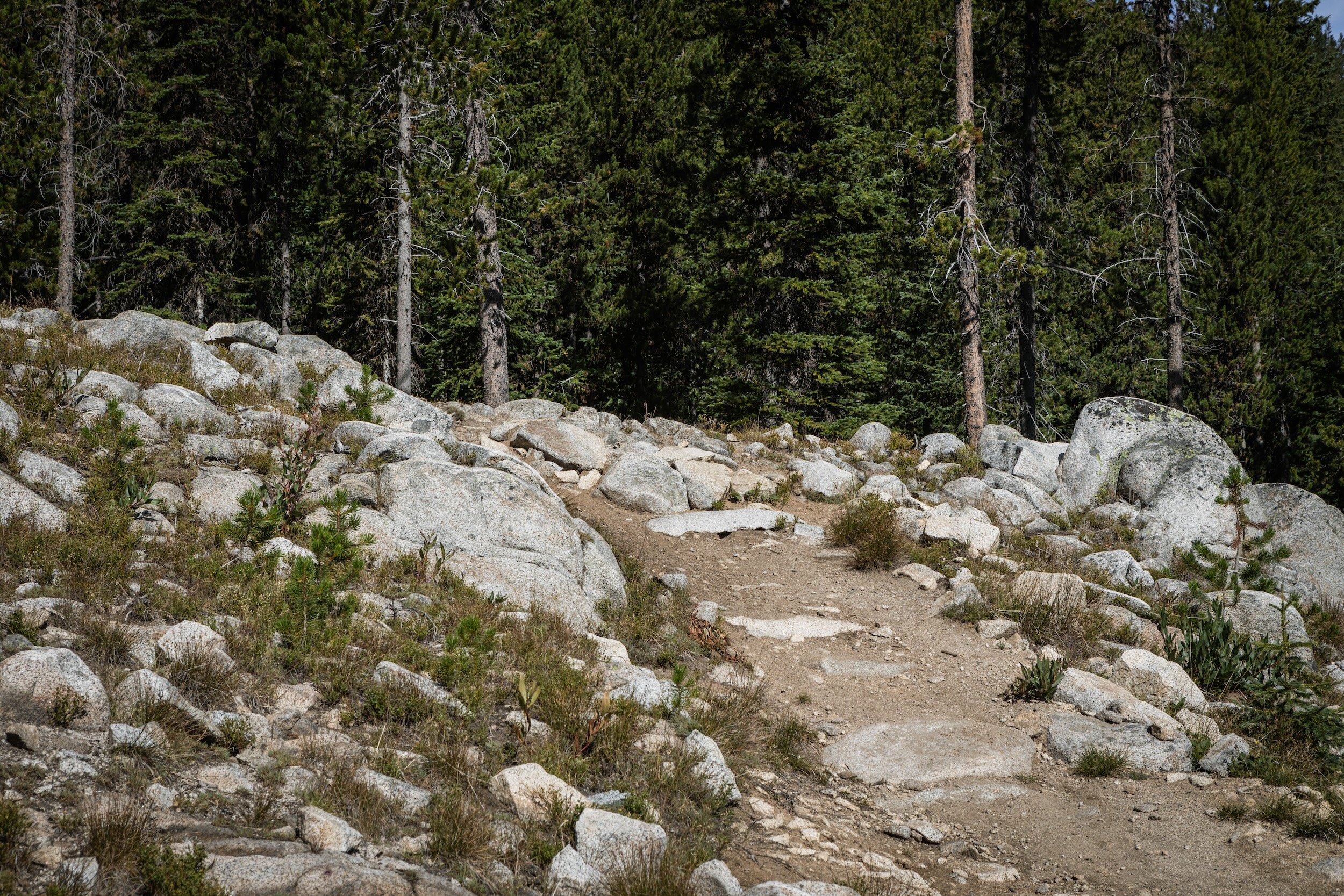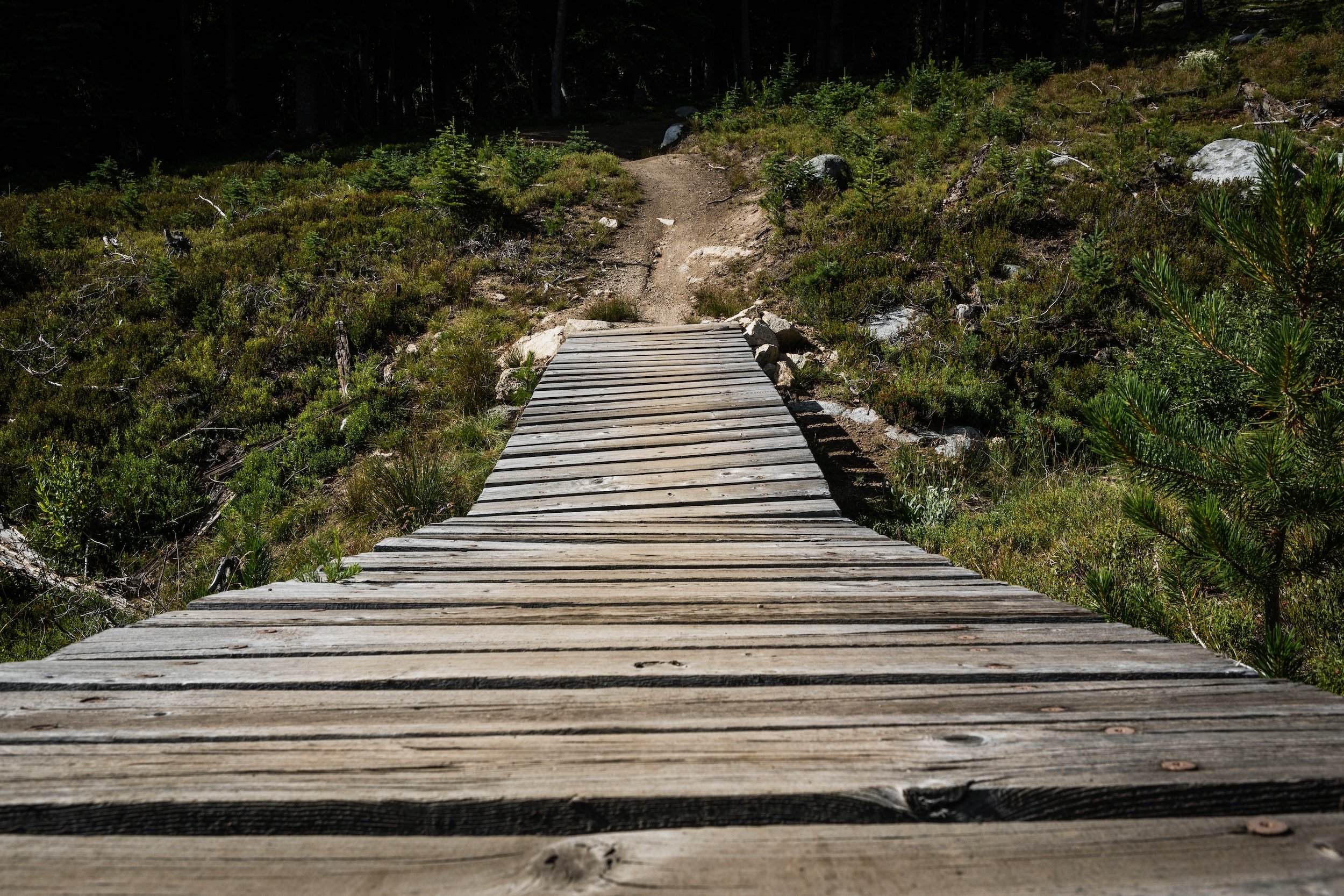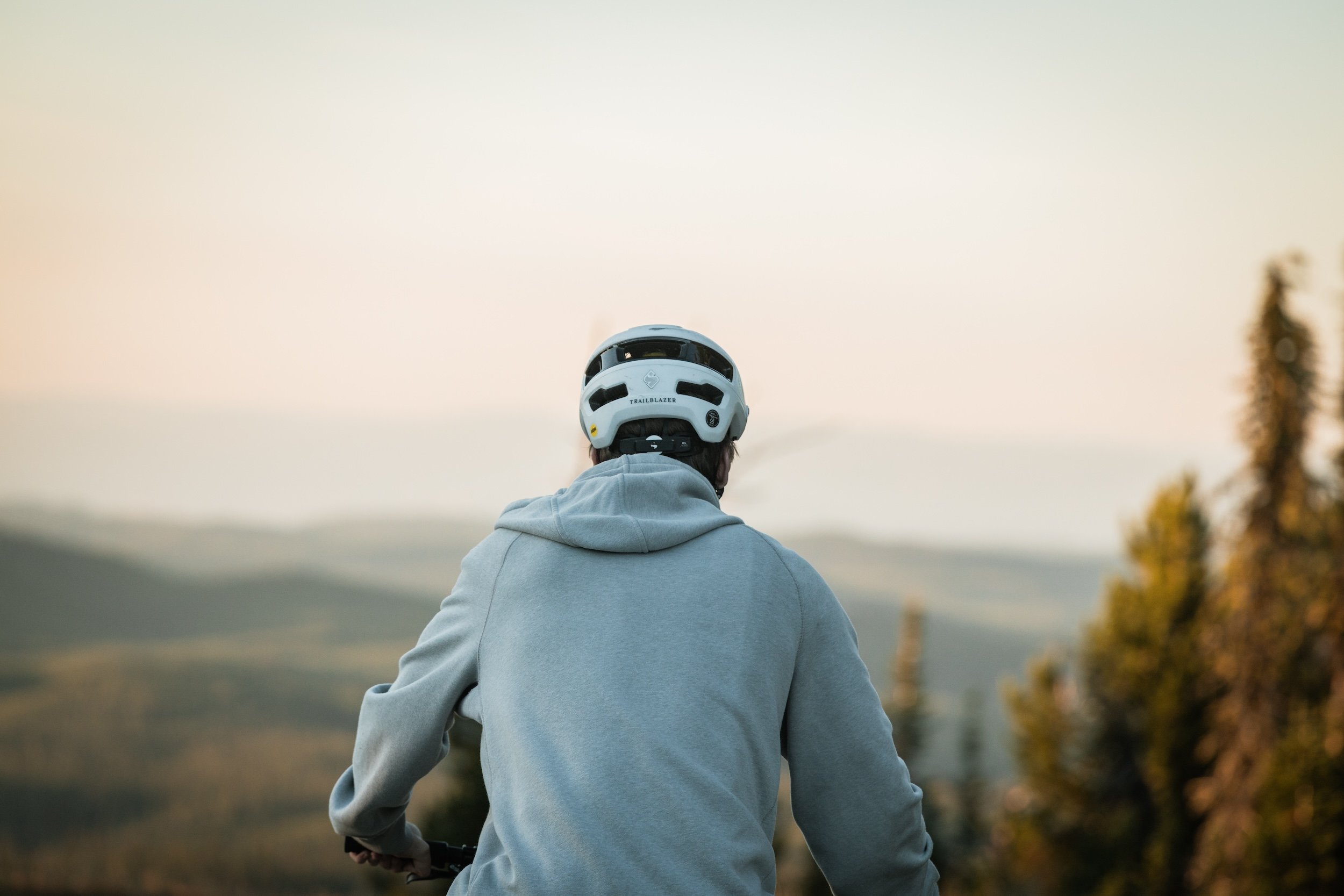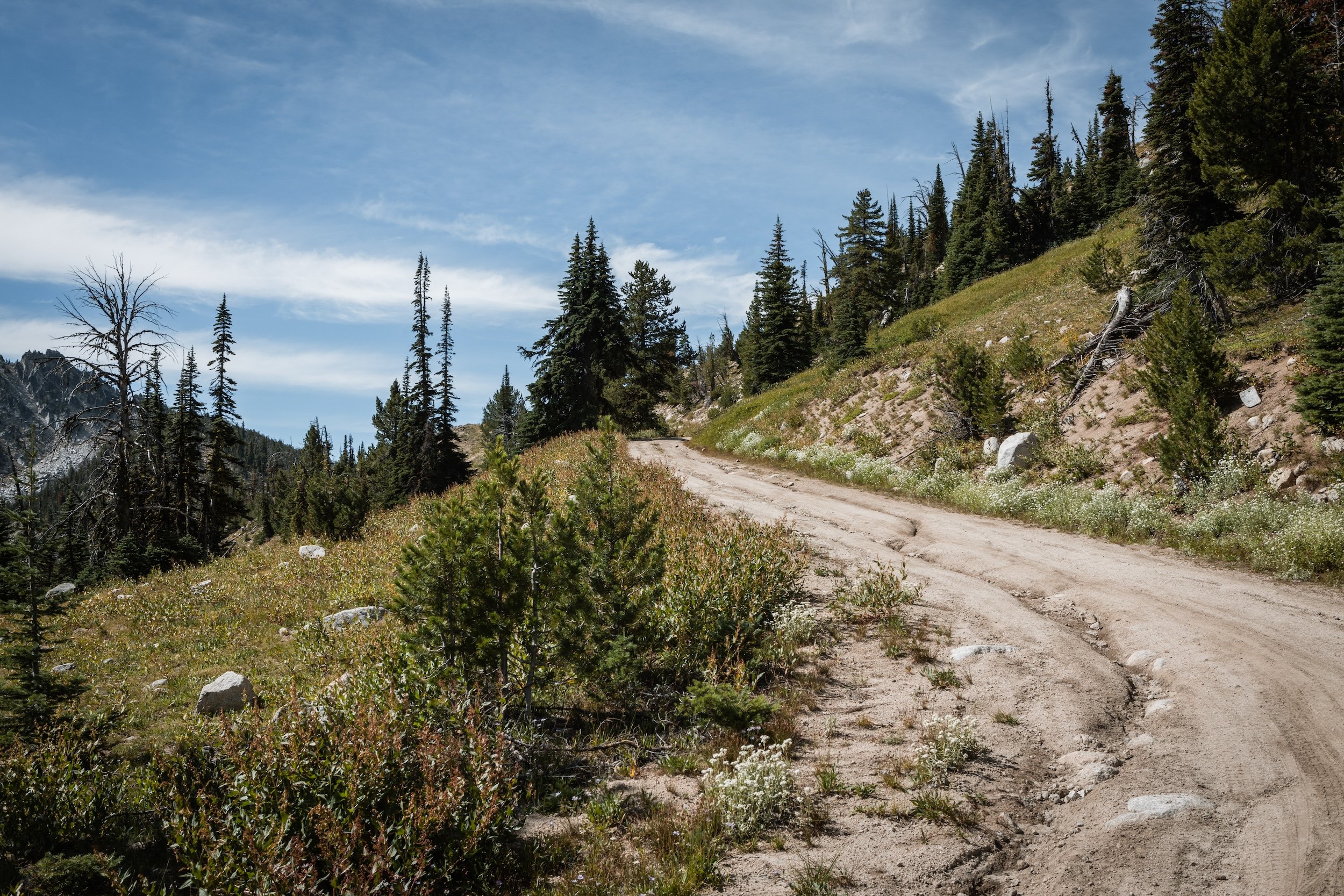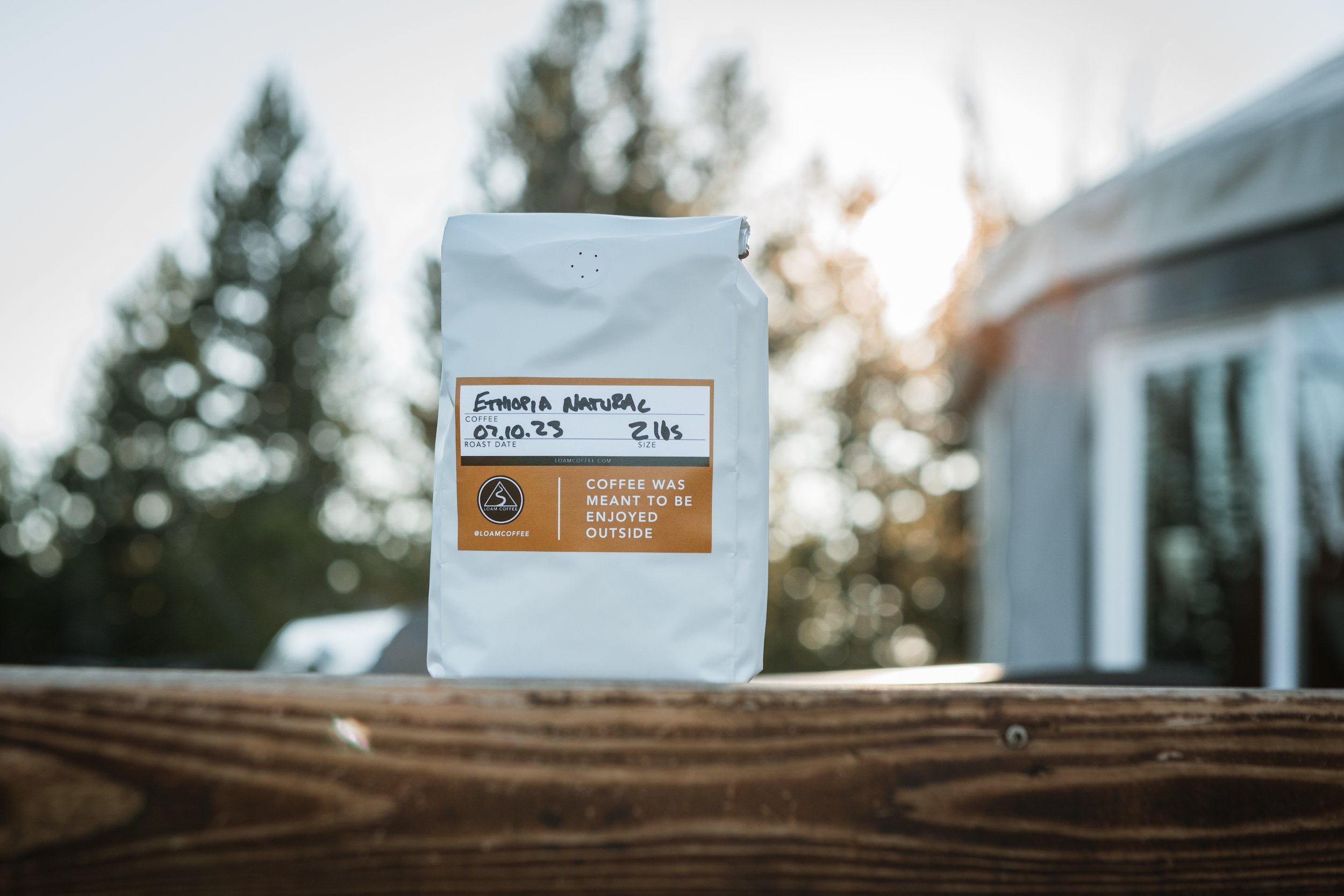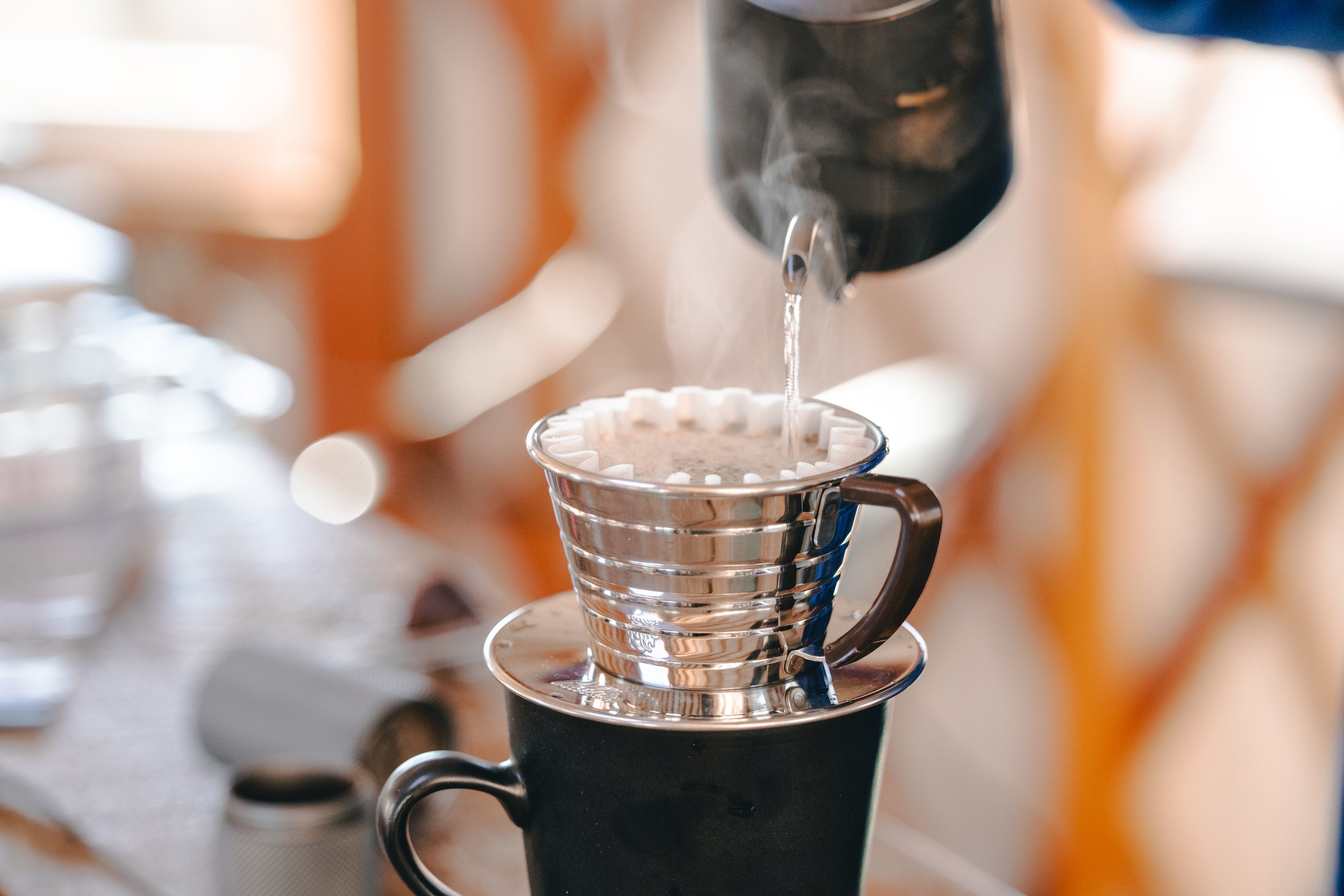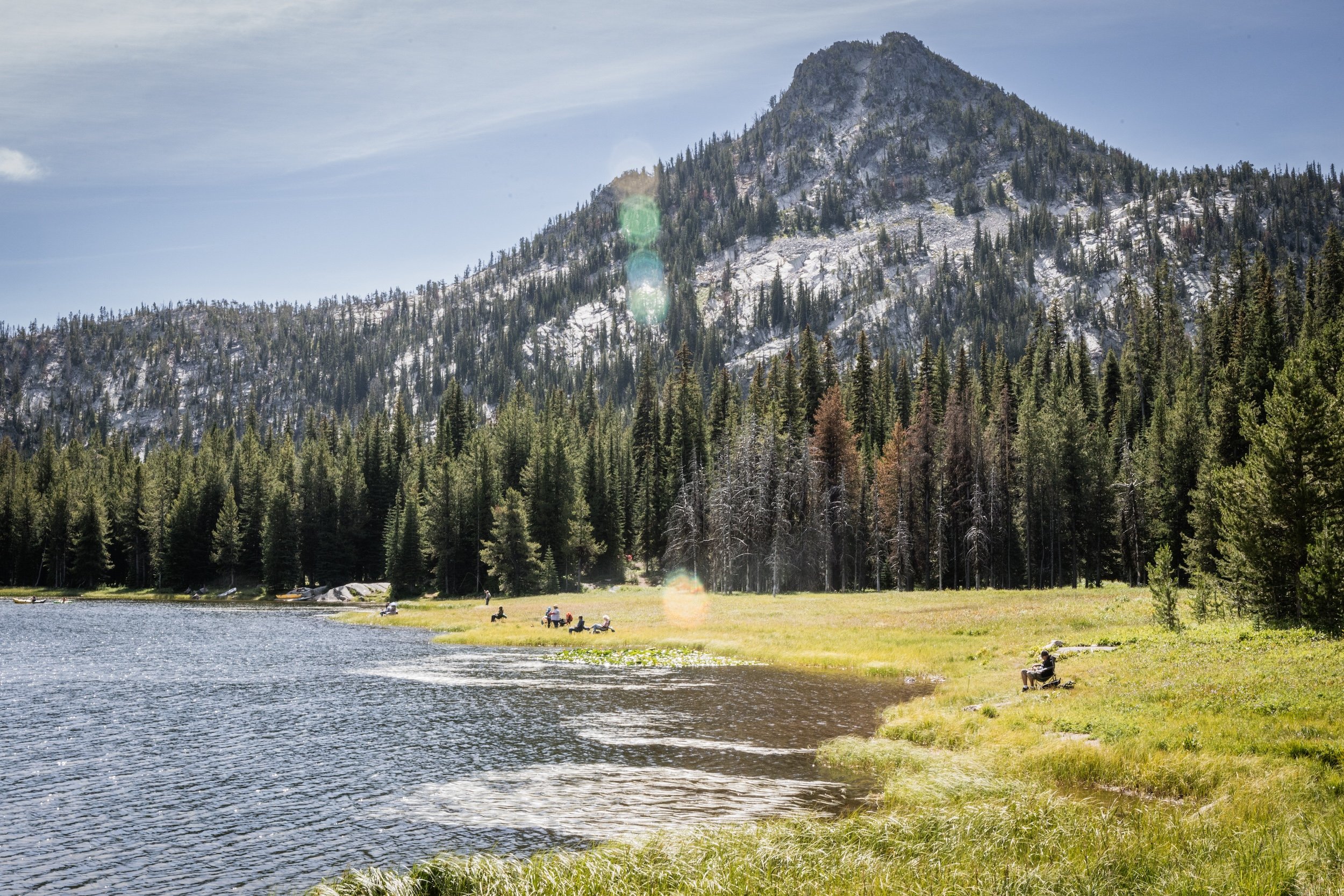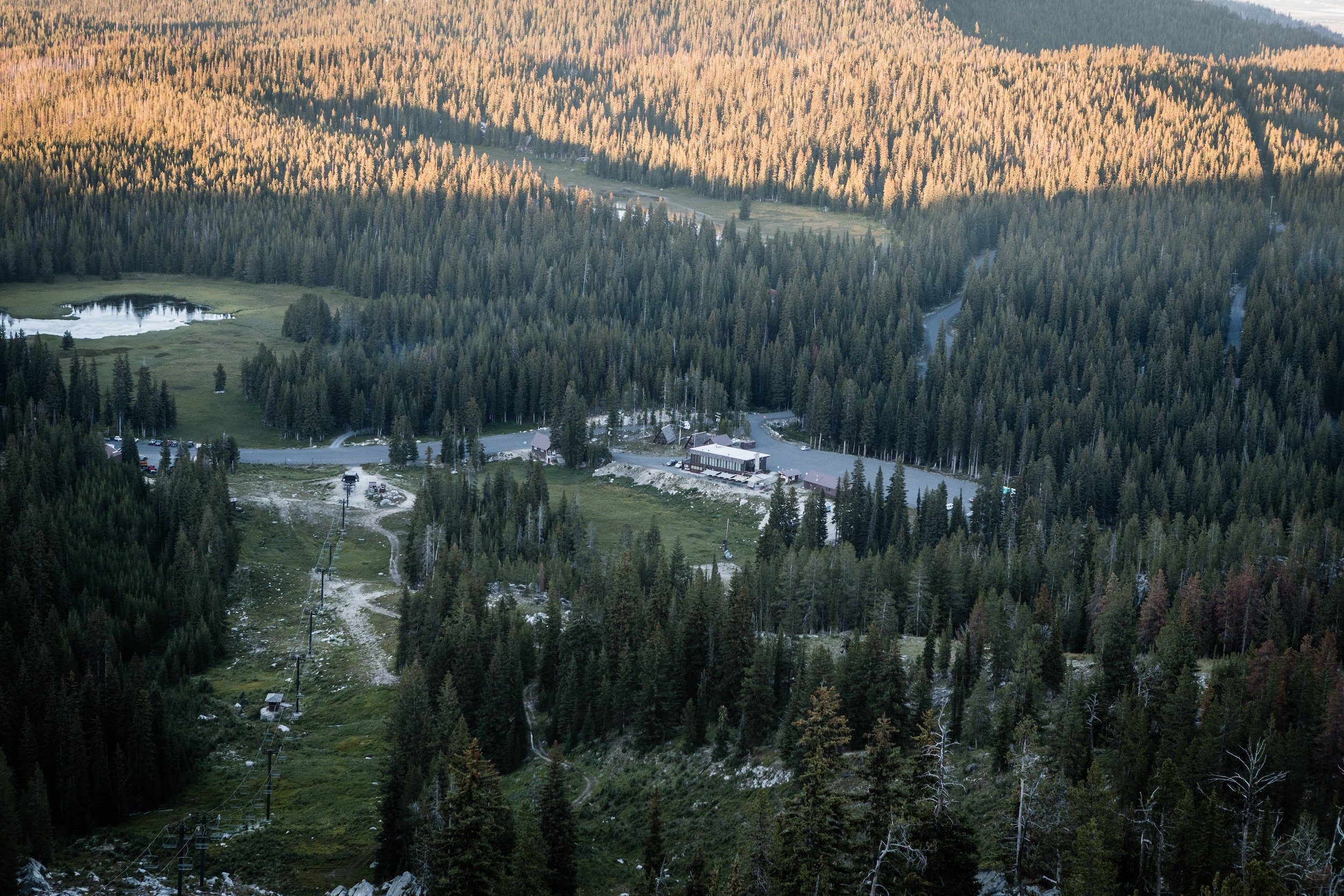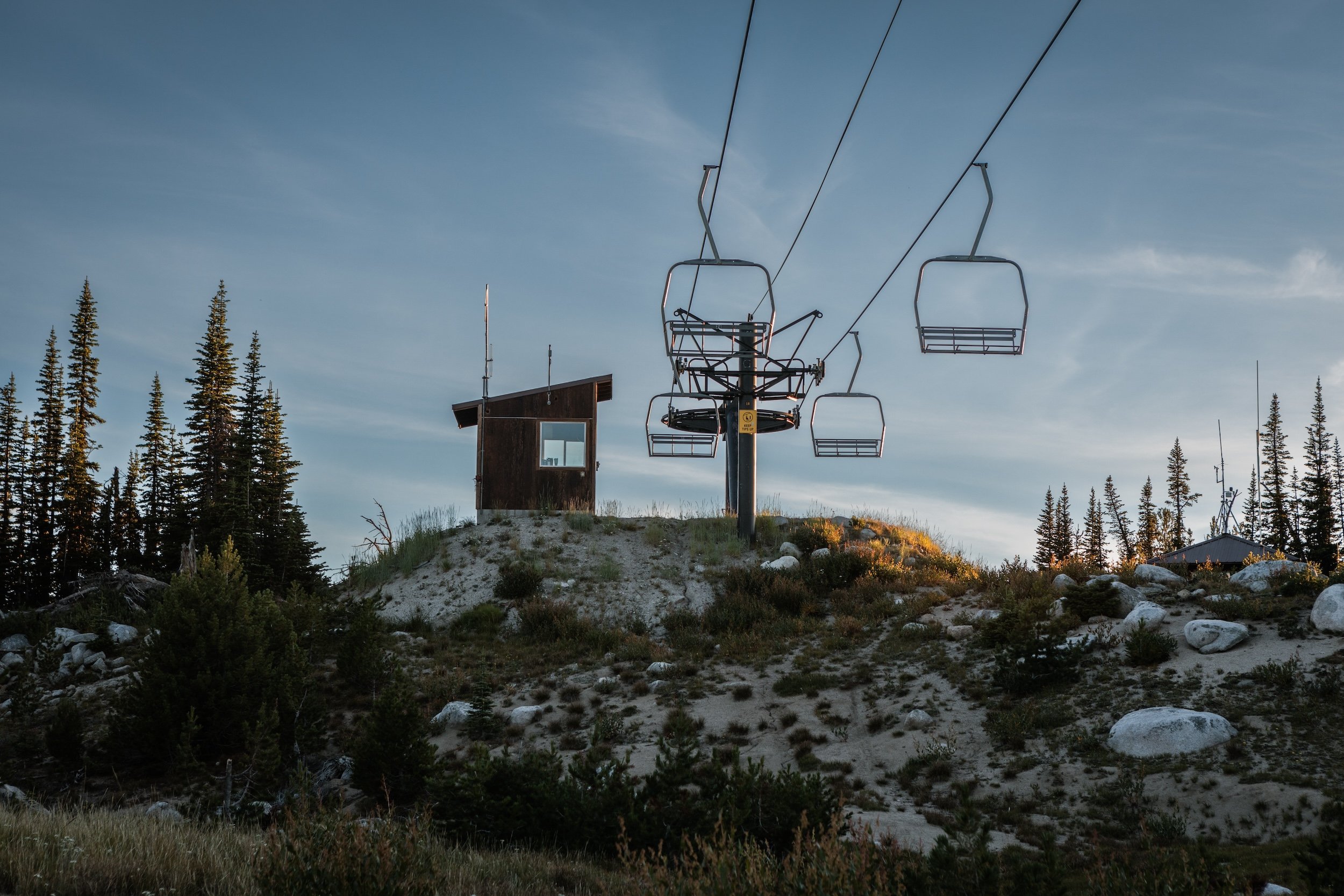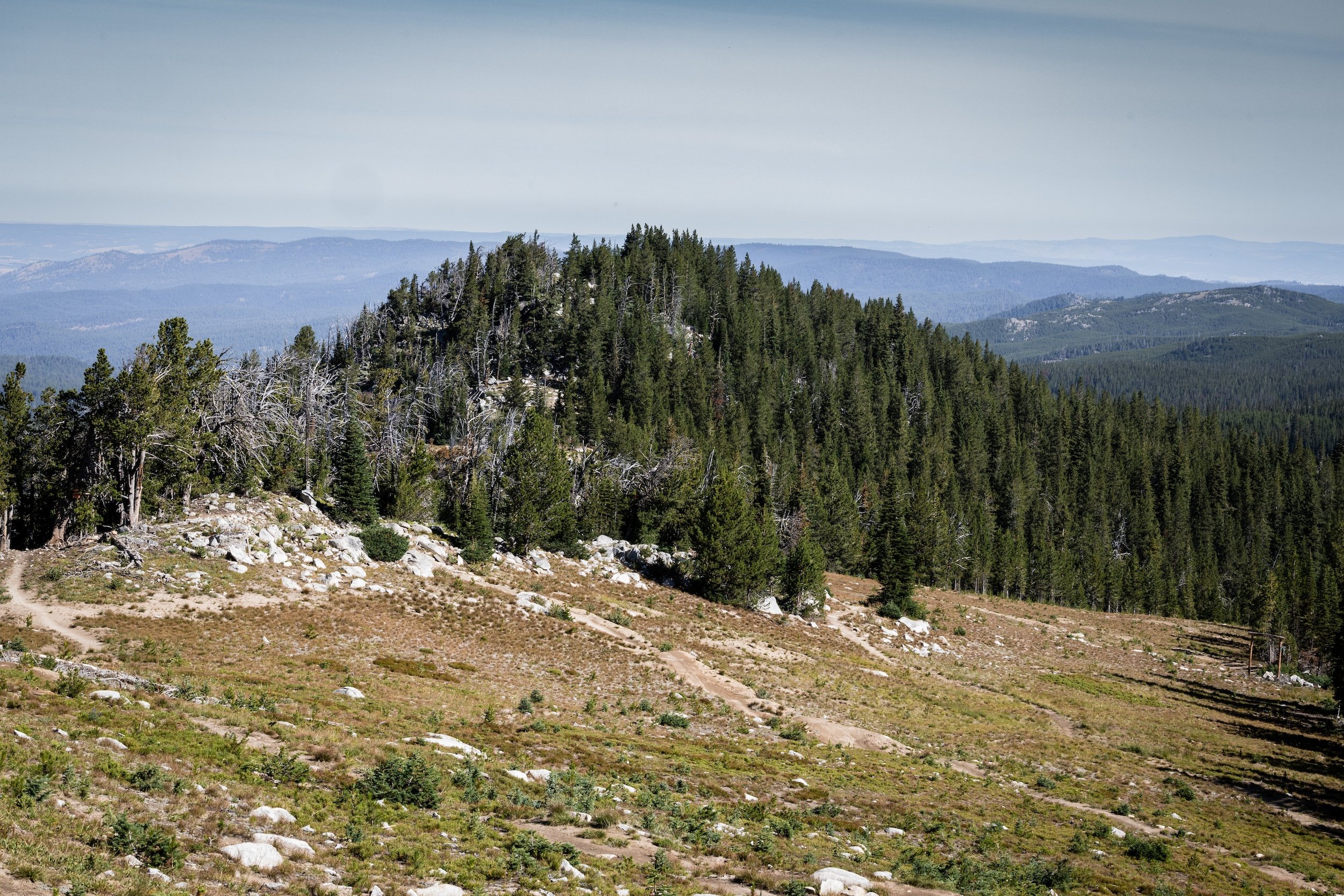The Vision to Make Anthony Lakes Mountain Resort a Mountain Biking Destination in Eastern Oregon
The Pacific Northwest has a legendary reputation in mountain biking lore. There are mountain biking destinations of note dotted throughout the West, such as Moab, Sedona, Whistler, and many more. As a region, Oregon, Washington, and British Columbia provide the perfect recipe for trail-building artistry—namely, ample precipitation and pristine dirt for shaping and sculpting berms, table tops, and other features. However, five hours east of Portland, it’s an entirely different world.
To the uninitiated, there’s the belief that all of Oregon consists of fog-drenched rain forests, craggy coastlines, and the volcanic spine of the Cascades bisecting the state. However, east of Portland and east of the Cascades, there are numerous mountain ranges consisting of soil types, flora and fauna, and climate that are more at home among the myriad of other drier mountain ranges across the West. Perched atop the Eklhorn Mountains, which are part of the Blue Mountain that dominates northeastern Oregon, is Anthony Lakes Mountain Resort (ALMR). This remote ski resort outside Baker City is a hidden gem of a mountain bike destination.
Earlier in the year, I wrote an article on opening day at the Timberline Bike Park on Mt. Hood. Covering it from a trail-building perspective, I was curious about the state of trails since it is a relatively new bike park. That prompted me to continue exploring other bike parks in the state. That brings me to Anthony Lakes.
One of the conversations I have on repeat with anyone I talk with about Trail Builder Magazine is that innumerable topics spring up from building and maintaining trails. That ranges from trail-building techniques to economic development through adventure tourism to policy and advocacy and so much more. Leading up to visiting Anthony Lakes, I was still determining which angle I wanted to take. Instead, I went with an open mind, seeking to (a) discover what made this place special, (b) what it’s like riding there in regards to bike culture and infrastructure, (c) how a bike park fares in eastern Oregon away from major population centers, and (d) how good are the trails?
On a Friday morning in August, I set out from Portland in Nacho the Van, destined for Anthony Lakes. For a variety of reasons, I’ve not taken advantage of riding in eastern Oregon as much as I’d like to have. It was a bit tortuous passing various trail systems, like Mount Emily Recreation Area (MERA), which sits outside the college town of La Grande. Much of the area’s trails, Anthony Lakes included, are under the watch and care of the Blue Mountain Single Track Club (BMSTC). Instead, I was focused on getting to Anthony Lakes. Exiting Interstate 84 north of Baker City at the town of North Powder, my altimeter registered roughly 3,200 feet above sea level. From that point on, until we reached the resort, we climbed. The base of Anthony Lakes sits at 7,100 feet.
When you say or hear the phrase “bike park,” all kinds of thoughts, ideas, and images come to mind. Much of that depends on your personal experiences or watching races at reputable bike parks across the world, such as Rotura, Les Gets, or Whister. Most of the time, we think of lift-assisted bike parks. The trails at Anthony Lakes are only accessed by pedaling. The good news is that from bottom to top, it is only 800+ feet up a gravel road. Once atop, at 8,000 feet, not only are the expansive views mesmerizing, but that’s when you point your bike down the mountain, and the fun begins. But I am getting ahead of myself …
Rolling into the parking lot of the resort by Friday dinner meant one thing: dinner at the Starbottle restaurant at the lodge for wood-fired pizza. While it was a warm and dry summer in Portland, it was a reprieve to get away to cooler, higher elevations. That was August. It’s now the end of October. At Anthony Lakes, snow already fell in late September. A few days ago, there were eight inches of snow on the ground. But in the summer, it’s a paradise of a different kind.
After enjoying a spectacular meal, our journey wasn’t over. We had more driving and climbing to do. The destination was Creston’s Yurt, located at the top of the Rock Garden chair lift, reachable by a rough access road. At 8,000 feet above sea level, the views were breathtaking. Equally as good was that the beginning of the Broadway Flow trail sat mere feet from the yurt. That first night, we sat outside in the dark, mesmerized. The night sky lit up.
The Broadway Flow trail is the gem of Anthony Lakes. Anthony Lakes Mountain Resort and the Blue Mountain Single Track Club, working in partnership with the Wallowa Whitman National Forest, applied for a Recreational Trails Program (RTP) grant to build the Broadway Flow trail. The build started in 2017 and was completed in 2018 by Dirt Mechanics out of Bend. The resort has one downhill trail and a few other XC trails (including some challenging and fun technical black diamond trails) sprinkled across the property. However, just across the road from the lodge is another downhill trail, Two Dragons. Over the two days, ascending and descending, and conversations with riders on the trail and at the lodge, most shared that they would ride Broadway and then hit Two Dragons. Broadway Flow drops 900 feet in elevation over the course of two miles, and Two Dragons descends another 676 feet over two miles. For those looking for fast and fun descents, you won’t be disappointed.
Riding the Broadway Flow trail, rated as a blue trail, reminded me of everything I love about mountain biking. Fast, fun, and scenic. The whole time there riding, I kept wondering how many other people travel here to ride at Anthony Lakes. Whenever possible, I’d stop and chat with people on the trail. This ranged from a bike shop owner to a professor at Eastern Oregon University to a wildland firefighter who lived nearby and more. Each of them shared how much this place means to them. For some, it’s a weekly riding destination for laps. Others drive a little further. I ran into a father and son from Bend out on the trail. The father grew up skiing at Anthony Lakes. Now, as a father living in Bend, he makes it part of his summer to come and ride bikes here with his family.
Pulling up the trail stats on Trailforks is both helpful and not. I was keen to figure out how many people ride there and what I could glean from any data. For example, Trailforks has only 69 trail check-ins at the Broadway Flow trail for 2023 and 435 for all time. In comparison, the much beloved Alpine Trail over in Oakridge shows 589 check-ins for 2023. I rode Alpine this summer during Mountain Bike Oregon (MBO), and most people I rode with over the several days there never checked in on Trailforks. As a result, the data is lacking and inconclusive. However, numbers only tell part of the story.
Anthony Lakes is a special place. Like you, I’ve ridden in numerous locations this year on all kinds of trails. However, I can’t shake this experience. Fall time is usually a frenetic time for me. But in moments of stillness, I keep thinking about Anthony Lakes and the Broadway Flow trail. Maybe it was the wood-fired pizza at the lodge, brewing coffee every morning at 8,000 feet, watching the sun go down each night, gawking at the stars, or sitting at the top of the chairlift platform and staring at distant mountain peaks. You see, trails are not simply ribbons of dirt that cut across the landscape. They are part of a larger story. It’s about the experience. I can’t think of a better trail I’ve ridden on in quite some time. I’d stack it against other well-known trails. But I wasn’t looking for huge gap jumps or super gnarly features. As the name of the trail implies, I was looking for flow.
In our conversations about trail building, whether we’re talking about advocacy work, funding, permitting, or trail features, it’s easy to lose sight of the experiences and memories we’re creating for people. We love to ride, not simply because it’s a form of exercise. Some even squirm when we talk about it as a sport. Why? Because it’s an experience. A lifestyle. A form of outdoor recreation. Anthony Lakes delivers an incredible experience. No waiting in the queue for 15-30 minutes to hop on the next chairlift up. No wading through crowds of people in the parking lot. Instead, you’re given a memorable experience down a well-thought-out trail that will leave you smiling and eager for the next run down.
The best news? It will only get better. I’ve been reading and rereading the Anthony Lakes Mountain Resort 2023 Master Development Plan that is available on their website. As part of their upgrading plan, as it directly relates to mountain biking, they propose building six new mountain bike trails over the next ten years. There’s a lot more in the plan related to other functions, facilities, and capacities at Anthony Lakes. The bottom line is that it’s only going to get better. The future is bright as mountain biking and summer and winter visitor numbers grow. The report states, “As mountain biking has surged in popularity during the last decade, ALMR has looked for ways to engage with this sport and provide locals and visitors with more trails to enjoy in the mountains.”
I am grateful to the wonderful staff at Anthony Lakes who accommodated me. Personal, friendly, and everything you’d hope for at a bike park. Whether you live in Portland, Boise, or around the Oregon-Idaho-Washington region, this is a destination-worthy place. The good news is you can combine riding there with other nearby trails such as MERA, the Elkhorn Crest Tail, and more. Be sure to stop by the charming town of Baker City and Barley Brown’s Brew Pub for exceptional food and beer or The Trailhead Bike & Ski Shop for anything you need bike-related. For smaller and up-and-coming bike parks around the country and globe, Anthony Lakes is an unfolding beautiful story of why we love mountain biking and those who build and maintain these trails.
Words: Sean Benesh Photos: Sean Benesh and Grant Benesh
ABOUT THE AUTHOR
Sean Benesh
Sean is the Founder and Editor-in-Chief of Trail Builder Mag. He is also the Communications Director for the Northwest Trail Alliance in Portland, Oregon. While in grad school, he worked as a mountain biking guide in Southern Arizona. Sean also spends time in the classroom as a digital media instructor at Warner Pacific University.




